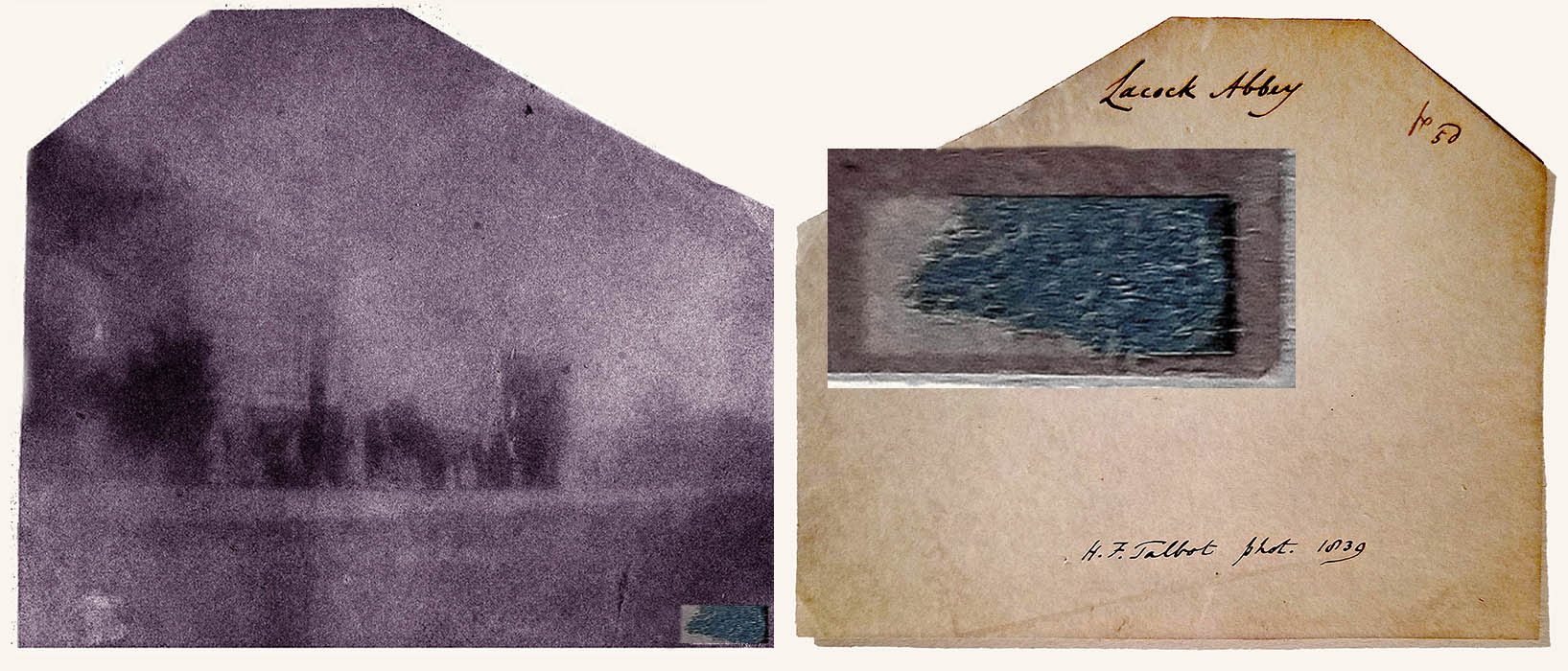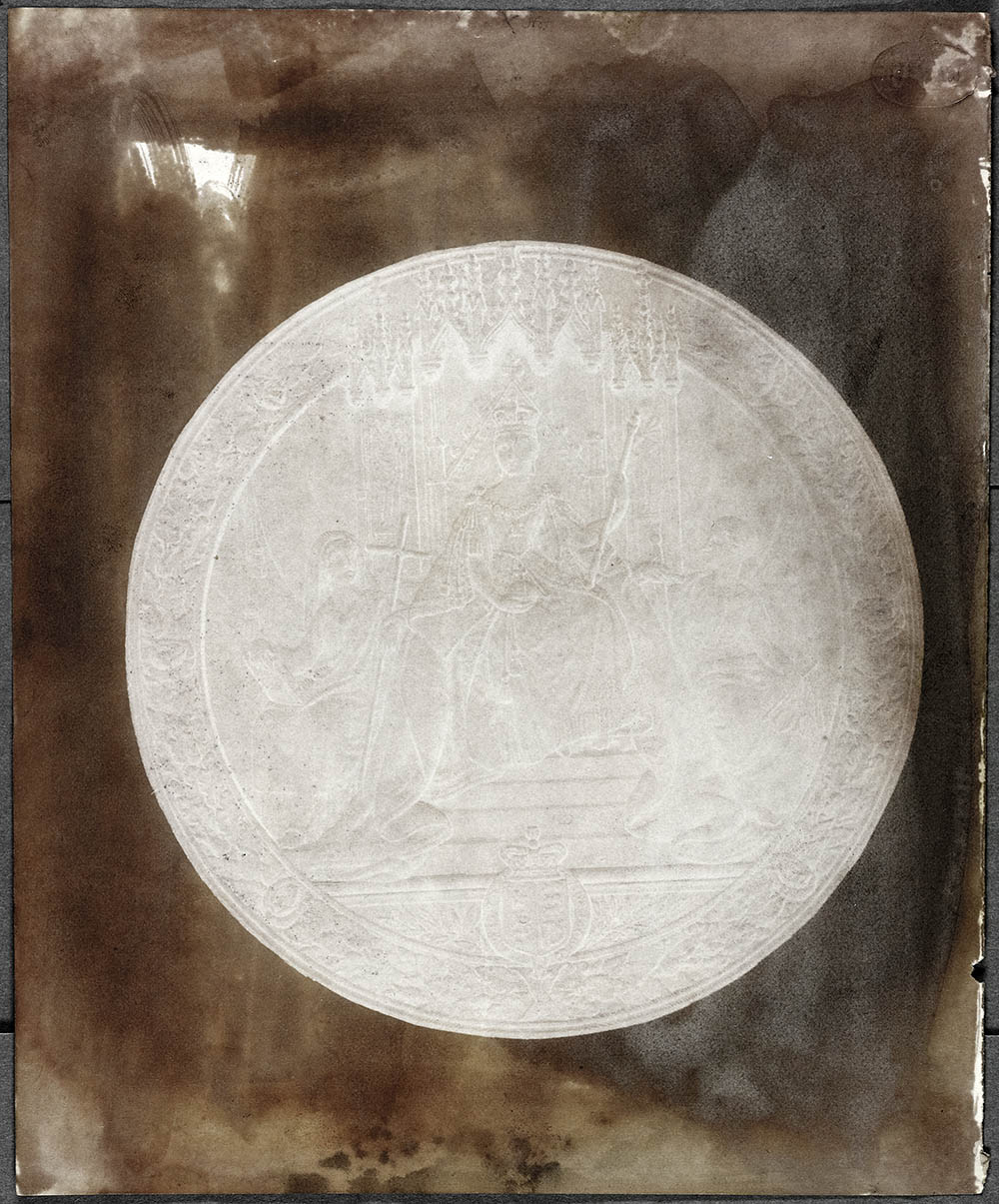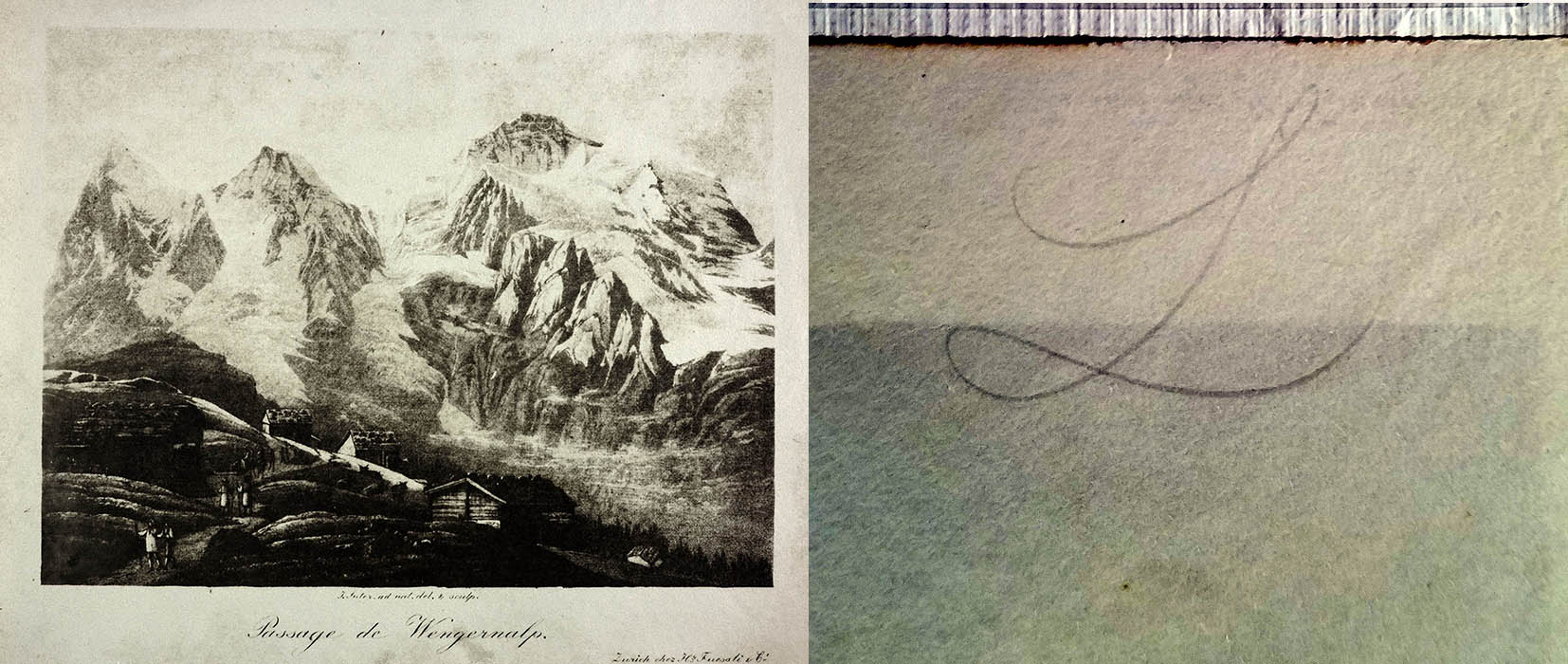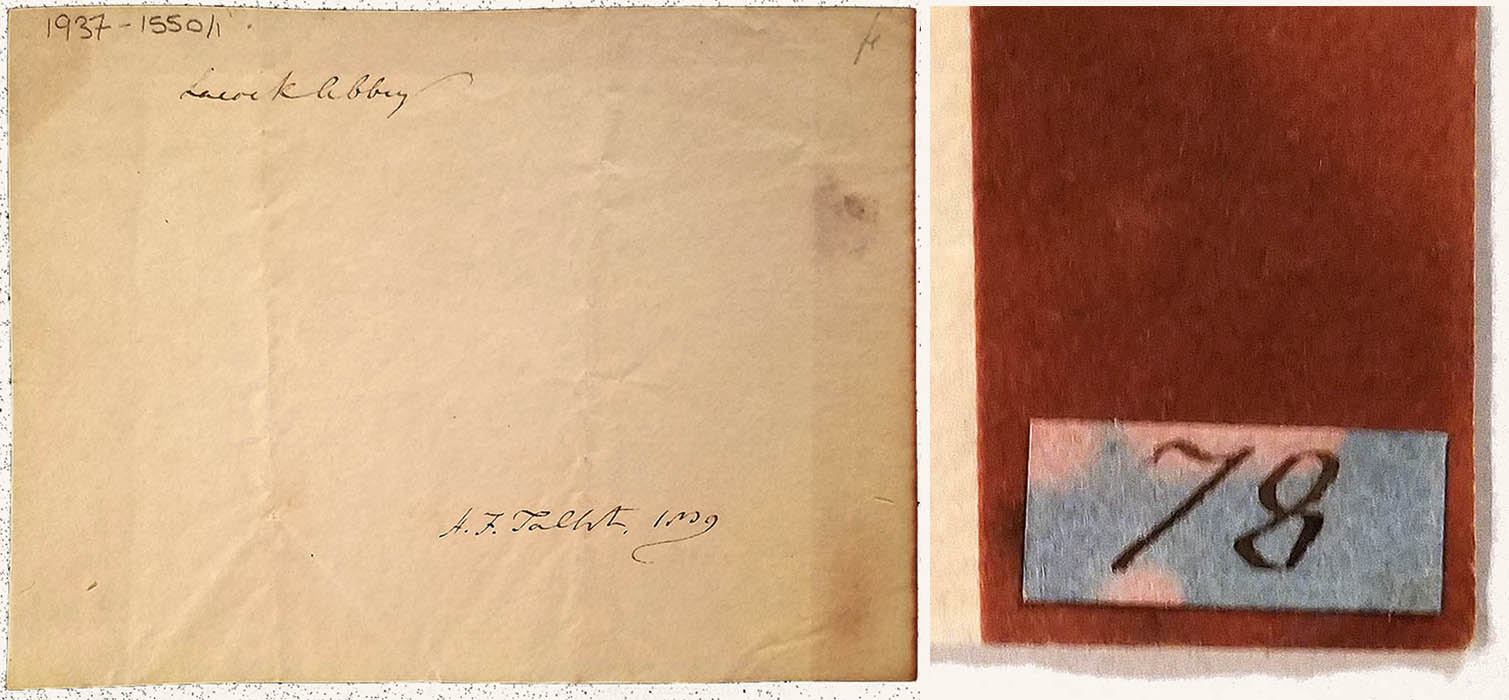Yesterday (in 1839), in hasty response to Daguerre’s surprise announcement in Paris, Henry Talbot first revealed his photogenic drawing process to the public. His vehicle for this was a rapidly organised exhibition at the Royal Institution in London, following the customary weekly lecture by his friend Michael Faraday. The popular lecturer marveled that “no human hand has hitherto traced such lines as these drawings display; and what man may hereafter do, now that Dame Nature has become his drawing mistress, it is impossible to predict.”
I spent the first part of this week at the newly-reviving National Science and Media Museum in Bradford. In re-examining parts of the wonderful collection that I first studied at the Science Museum in London in the 1970s, somehow on this trip the ‘hand of man’ struck me most forcibly.
In the past, many museums only roughly catalogued the Talbots that they held, often measuring just the paper size (the image area of the negative is critical to our work). If they copied Talbot’s photographs at all, generally only the recto was copied and even then often the borders were trimmed off. Very rarely were inscriptions on the verso recorded. This is happily evolving but we have some catching up to do.
 Many of the following images were taken under extremely low light levels, using non-specialised equipment to record very faint or minute inscriptions. While they fall short of the ideal, they should convey the essence of Talbot’s thoughts about his photographs.
Many of the following images were taken under extremely low light levels, using non-specialised equipment to record very faint or minute inscriptions. While they fall short of the ideal, they should convey the essence of Talbot’s thoughts about his photographs.
Some inscriptions confirm what we already know. This original negative for ‘The Open Door’ was used to make the prints for plate 6 of The Pencil of Nature.
Inscribed on the back is the date – this is in Talbot’s distinctive script – but also the plate number in a less identifiable hand. One could argue that it was Talbot writing quickly, but I think it far more likely to be by Nicolaas Henneman, adding the plate number directly on the negative so that there could be no confusion.
We have records of Talbot copying an engraved glass roundel of Britannia. The inscriptions on the verso of this particular image demonstrate his early interest in this subject, but also carry a good deal of information about his working practises in the first year of photography.
There are inscriptions that in other cases are more puzzling.
The copy of a lithograph on the left is routine enough, but on the verso is a large delicate letter L. This easily recognisable letter appears on the back of many prints that came out of the Lacock Collection. I imagine that it is the marking of a particular individual, rather than a recording of a chemical component or process, but nobody in the Talbot circle suggests an ‘L’. Thoughts?
But here is one that is even more fun to play with. It is a portrait of Henneman in the Cloisters, done with a one minute exposure and an early favourite of Talbot’s to demonstrate the capabilities of his new – but as not publicly announced – calotype negative process. Henry’s inscription and dating are clear enough, but how can we explain the other annotation on the verso? It is in a Continental hand and apparently part of a classification system. How did this print make its way back to Talbot? And what is the meaning of ‘verte’ inscribed in ink on the recto outside the image area? Green does not make sense as a subject description – was Talbot signaling that this was a young, unripe, immature attempt with his new process?
Finally, Talbot’s largest exhibition ever was at the British Association for the Advancement of Science, held in Birmingham in August 1839. When we last covered this, I had some ancient notes in my databases that pointed to some more possibilities and these were confirmed this week. Talbot had printed up a numbered broadside listing his exhibits and their significance. One section in particular stands out.
Now, these are not the prettiest images that you will ever see, but I am nearly certain that they are the actual prints that were shown to the gathered scientists that August.
 The inscriptions on the verso of this (enhanced) print point towards the possibility of it being early but the trace of a blue label proves to be conclusive. It is obviously related to at least two other survivors.
The inscriptions on the verso of this (enhanced) print point towards the possibility of it being early but the trace of a blue label proves to be conclusive. It is obviously related to at least two other survivors.
I’ve had to enhance both the negative and the print in this case, not surprising considering that they were exposed to an extended exhibition under uncontrolled lighting nearly two centuries ago. The print is a second one from the negative but the one exhibited at the BAAS in August 1839 also survives, albeit nearly totally faded.
The label is conclusive. It fits perfectly into Talbot’s handlist.
There is a third example from this series.
The print is almost totally faded but Sharington’s Tower is unmistakable when seen in the extreme enhancement on the right. The ’81’ label fits Talbot’s handlist. There is the additional notation that Talbot fixed this print for five minutes. These three are the only ones so far that I have been able to directly link to that August 1839 exhibition, but they serve as a reminder that even tiny little labels might well be an important historical record, not just the residue of a later museum display..
Larry J Schaaf
• Questions or Comments? Please contact digitalsupport@bodleian.ox.ac.uk • Unusually, all of today’s images come from one collection, that of the National Science and Media Museum in Bradford. The information presented here is meant to be indicative of a wider area of potential study, but iIf you would like specific citations for any of these images, just drop me a note.












